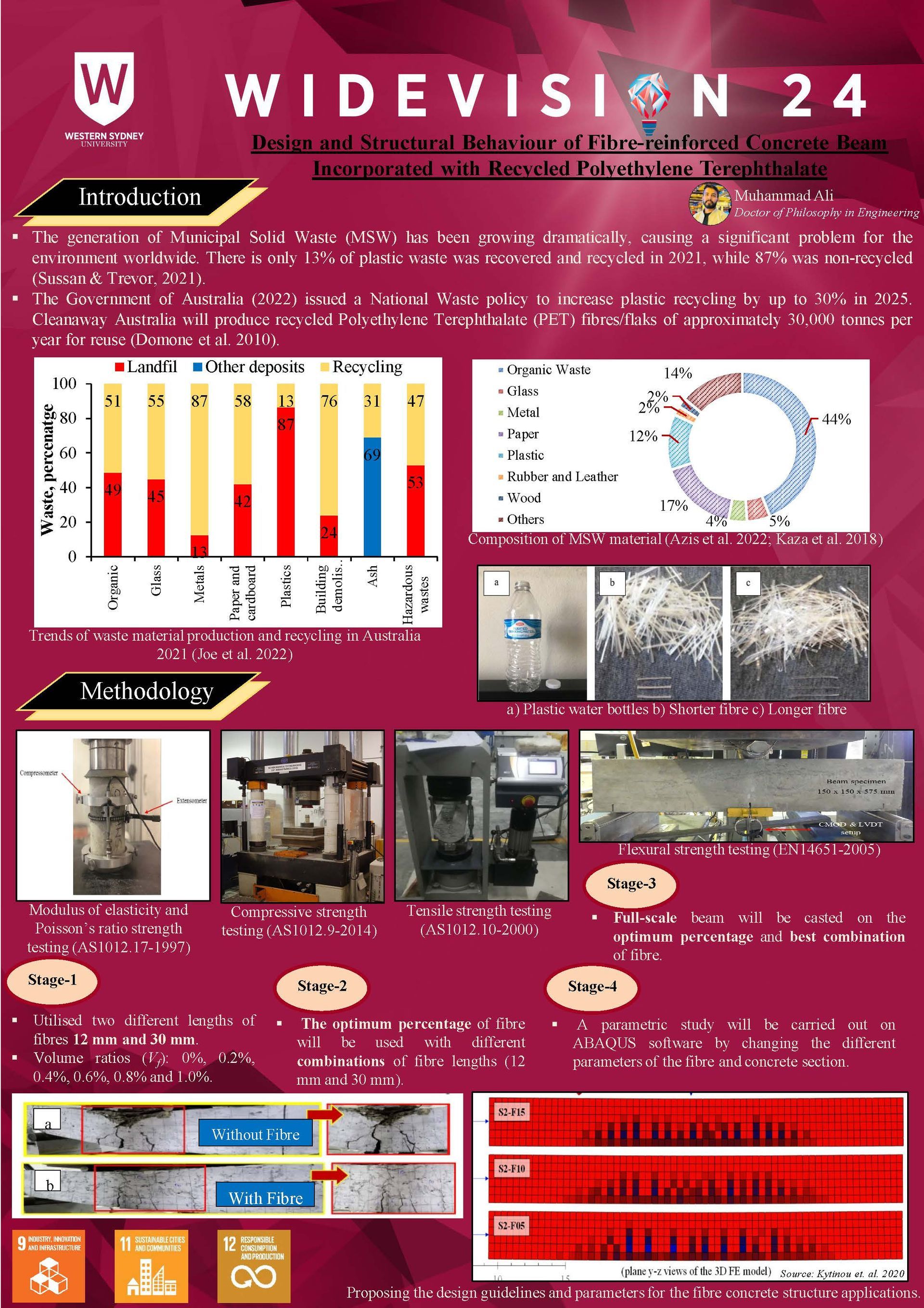Muhammad Ali is a first-year Doctoral Researcher at the School of Engineering, Design and Built Environment, having completed his PhD confirmation in July. He is a recipient of the prestigious Australian Government Research Training Program (RTP) Scholarship for higher degree research. Throughout his academic journey, he has earned two Gold Medals for his outstanding performance in both his master’s and bachelor’s degrees. Muhammad was also honoured with the Best Presentation award in Tokyo, Japan. With five years of field experience, including work on the Diamer Basha Dam Project, and a research focus on fibre-reinforced concrete structural applications, he is an accomplished researcher and has published five journal articles and conference papers.
Muhammad Ali
Design and Structural Behaviour of Fibre-Reinforced Concrete Beam Incorporated with Recycled Polyethylene Terephthalate
PROJECT
Concrete is the most commonly used construction material in structural buildings. Hardened concrete has lesser tensile strength and brittle nature in failure. Including macro synthetic fibres in concrete improves such properties of concrete, minimises brittleness, and increases the post-cracking properties of structural concrete. Therefore, this study aims to investigate macro synthetic (PET) fibres for concrete structure application.
On the other hand, the generation of plastic waste has been growing dramatically, causing a significant problem for the environment worldwide. According to a National Waste report, the use of plastic bottles in abundance in Australia for spring water and other types of beverages creates huge plastic waste. In the context of growing interest, a plant is installed to produce Polyethylene Terephthalate fibres/flaks of approximately 30,000 tonnes per year. This substantial volume of Recycled Polyethylene Terephthalate (R-PET) production is readily available for reuse. However, this research work presented a comprehensive work plan to investigate the macro fibres incorporated in concrete experimentally and numerically.
The experimental program is divided into three stages, where the mechanical and structural properties will be evaluated in stages 1 and 2. A full-scale beam performance will be assessed in stage 3 for the structural application. It is expected that the use of R-PET fibres in plain and reinforced concrete enhances the mechanical properties, ultimate load, energy absorption capacity, load-deflection behaviour, cracking pattern and crack width. In stage 4, the numerical analysis will be carried out for the fibre concrete beams through the finite element model. This large-scale experimental and numerical study will specify the suitable uses of R-PET for concrete structures, optimum dosage, and design guidelines for the safe construction of structures. Further, it will reduce the disposal problem of plastic waste worldwide.

With respect for Aboriginal cultural protocol and out of recognition that its campuses occupy their traditional lands, Western Sydney University acknowledges the Darug, Eora, Dharawal (also referred to as Tharawal) and Wiradjuri peoples and thanks them for their support of its work in their lands in Greater Western Sydney and beyond.
Acknowledgement of Country
Western Sydney University Copyright © 2004-2024 | ABN 53 014 069 881 | CRICOS Provider No: 00917K | TEQSA Provider ID: PRV12061 (Australian University)

